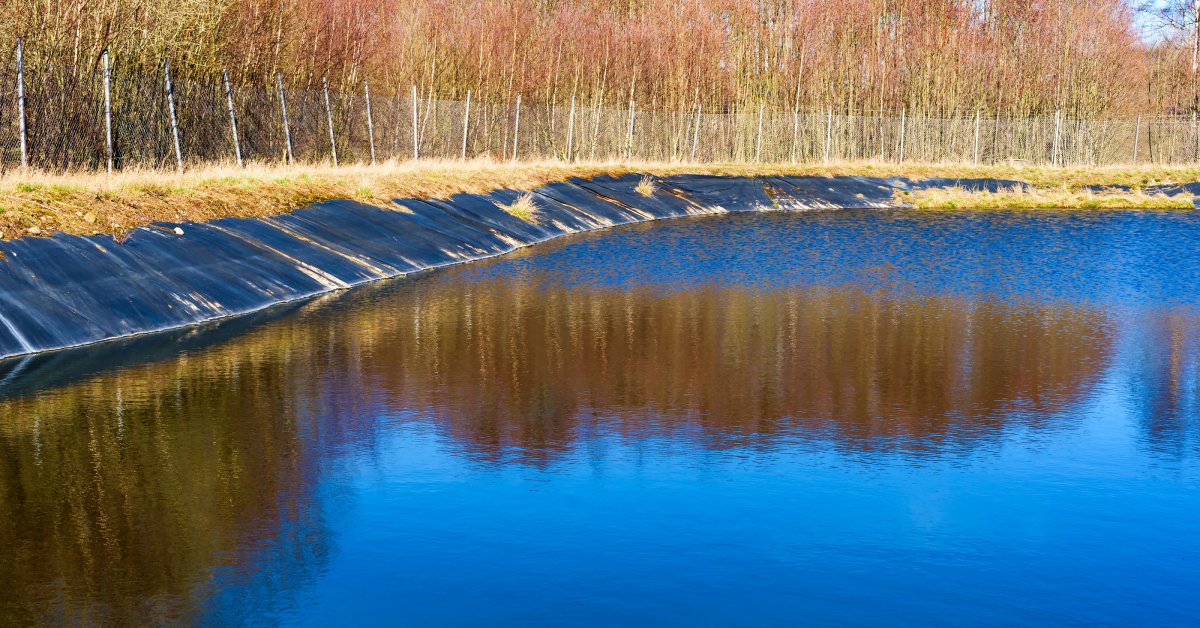Long-term UV exposure weakens even the strongest liner materials when left unchecked in open, sunny environments. Municipalities, agricultural districts, and construction crews face serious setbacks once liners begin to degrade.
Industrial-scale pond liners must perform reliably under punishing sun conditions, not just survive in short bursts. You can avoid early material failure by choosing smarter protection strategies at the design and installation stage.
Understand How UV Radiation Degrades Materials
Ultraviolet rays penetrate exposed liner surfaces and start to break down their chemical structure. Over time, that breakdown hardens the material, causes visible cracking, and reduces flexibility.
Industrial liners used in full-sun zones, like Arizona or Central California, face accelerated degradation if left uncovered. Operators often overlook subtle wear signs until the liner fails, leaks, or tears under normal load. Protecting large pond liners from UV damage starts with understanding how fast degradation occurs under constant sunlight.
Choose Liner Materials With Built-In UV Resistance
Some liner materials naturally resist UV damage better than others. Reinforced flexible geomembranes, especially those made with XR-5 or specialty PVC, retain flexibility even after years of exposure. Manufacturers embed UV inhibitors directly into the polymer layers, which slows chemical breakdown from the sun.
Long-term field performance data shows a clear link between upfront material quality and overall lifespan. Selecting the right blend plays a big role in protecting large pond liners from UV damage over years of use.
Techniques for Installing Liners To Minimize UV Exposure
A smart installation approach protects liners before the sun ever becomes a problem. Crews dig trenches to bury edges, preventing wind lift and sun exposure at weak points. Stretching liners tightly and avoiding folds removes creases where heat concentrates and damage starts.
Many commercial teams lay down a geotextile underlayment and add a top layer for extra insulation. At Western Environmental Liner, we have large pond liners for sale that arrive ready for easy installation in oversized formats.
Use Coverings and Barriers for Extra Protection
Shade structures offer a straightforward way to shield liners from intense direct sun. Golf courses and construction zones commonly use floating covers or suspended netting to cool surface temperatures. In some agricultural applications, operators use layered barriers that block light while still allowing rainwater to pass through.
Material choice matters, too. Cheap tarps often trap heat while better options reflect sunlight instead. Projects that span multiple acres benefit the most from this added layer of UV defense.
Monitor and Maintain UV-Exposed Liners Proactively
Surface wear usually appears as fading, stiffness, or powdery residue well before functional failure. Maintenance crews should schedule inspections quarterly or during seasonal shifts when sunlight exposure peaks. Recoating, patching, or tensioning problem areas early prevents expensive liner replacements.
At Western Environmental Liner, we work closely with our clients after installation to help track the liner’s condition and recommend maintenance tasks. Our team keeps large-scale containment projects running without interruption caused by premature liner degradation. Operators can sidestep expensive downtime and early liner failures with better choices upfront and consistent maintenance over time.


